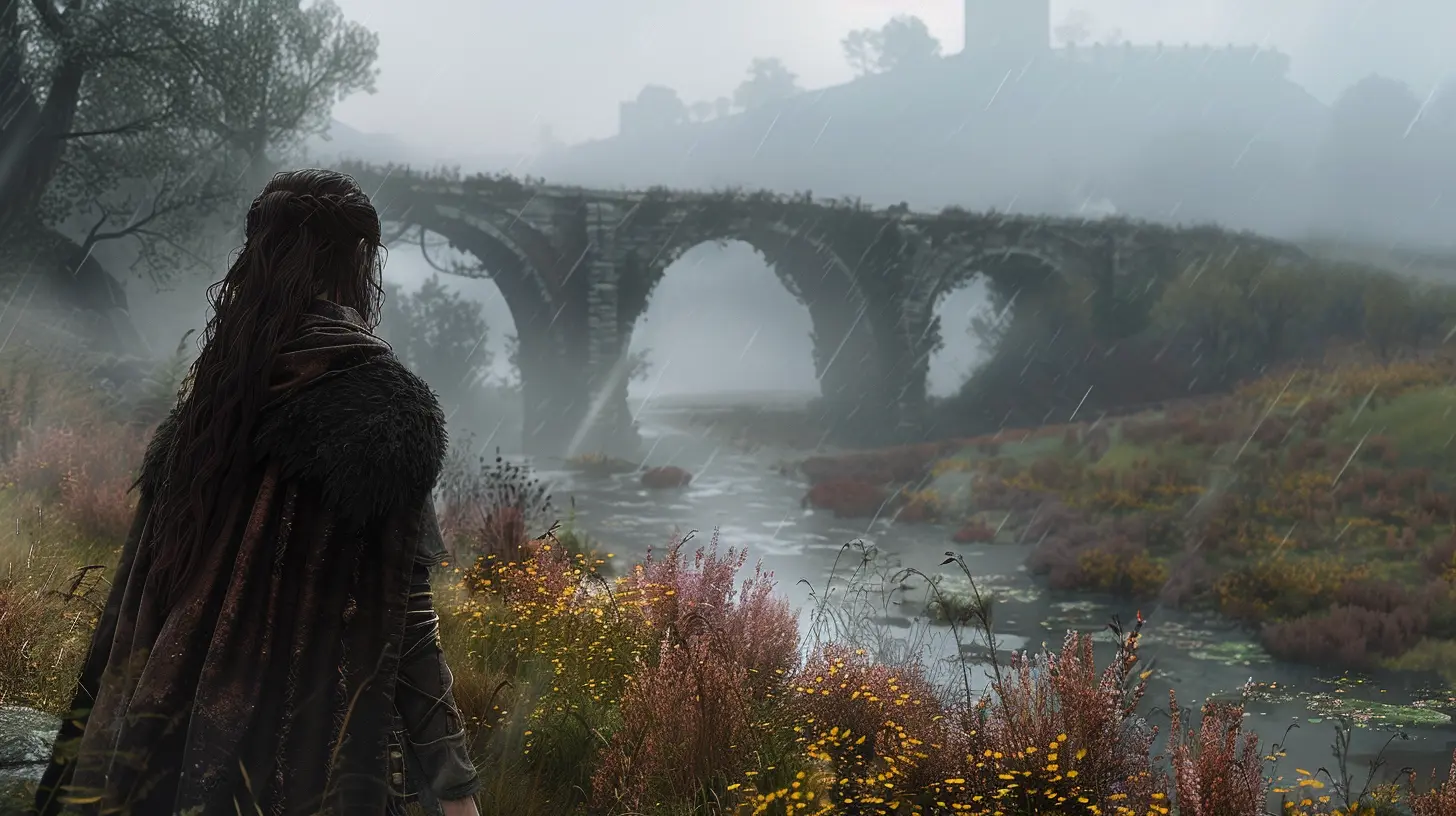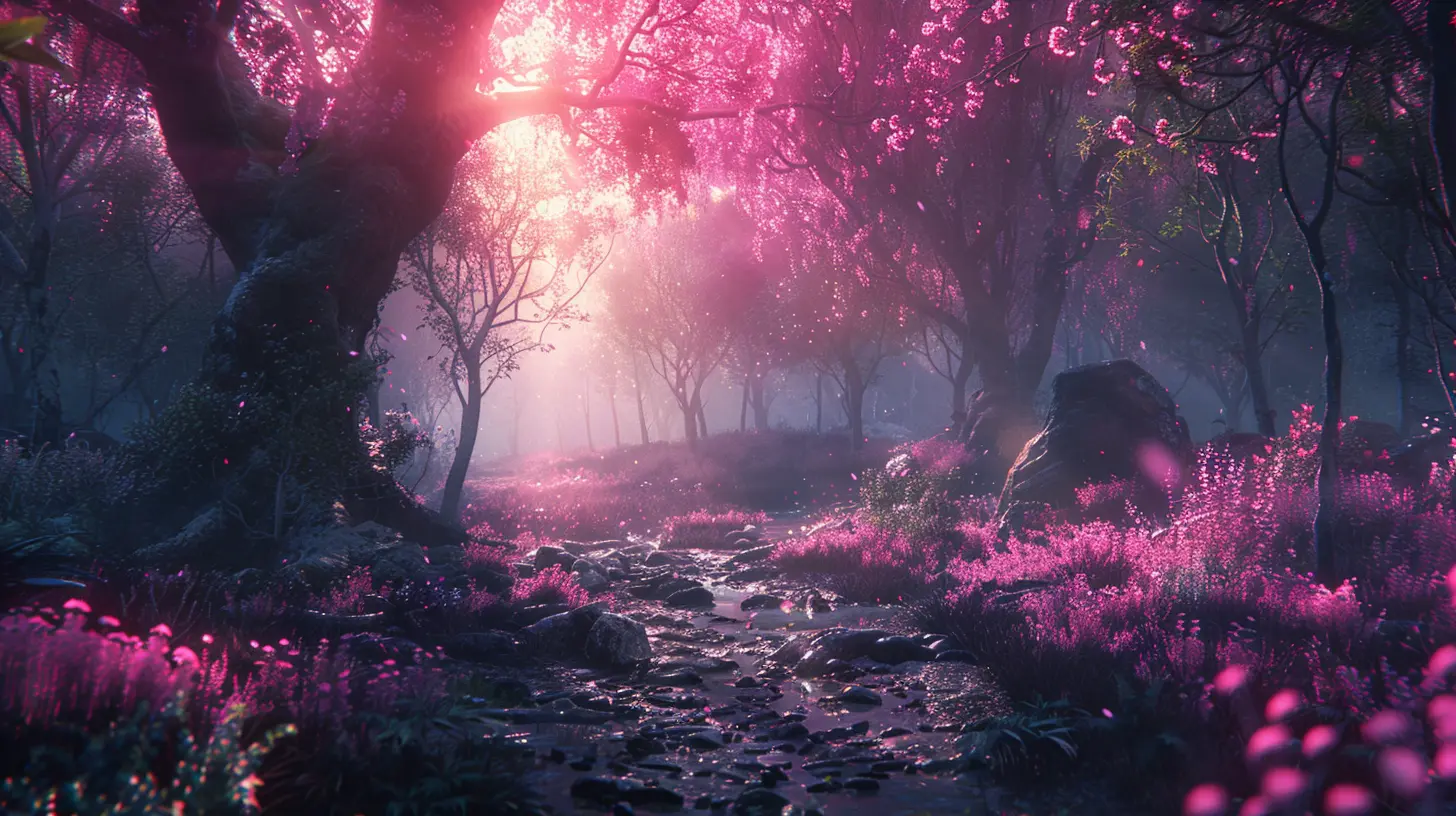First Look at the AI: Does It Present a Challenge?
25 September 2025
Artificial intelligence (AI) has finally made its way into gaming in a way that’s more noticeable than ever. From smarter enemies in single-player campaigns to powerful bots in online multiplayer matches, AI is no longer just the silent background code pushing NPCs along a preset path. It’s becoming a real force—a force that’s starting to feel like a real opponent. But that brings up the big question: does AI actually present a challenge?
Let’s dive into what AI in gaming really means today, how it's leveling up, and whether it truly raises the difficulty bar or just makes things look flashy on the surface.
What Do We Mean by "AI" in Games?
First things first: when we talk about AI in games, we’re not necessarily talking about the same kind of AI that powers self-driving cars or writes poetry. Game AI is a different beast altogether. It’s designed with one goal in mind: creating a more immersive and engaging experience for the player.Traditionally, AI in video games includes things like:
- Enemies that react to your actions
- NPC characters that interact with the environment and respond to your presence
- Bots that simulate human gameplay in multiplayer matches
- Systems that adapt levels, puzzles, or scenarios based on your skill
But the technology is evolving. We're now seeing neural networks, machine learning, and procedural storytelling algorithms sneaking their way into the codebase. They’re rewriting the rules of what a game can feel like.
Smarter, Not Harder: The Rise of Adaptive AI
One of the most exciting things about AI in gaming today? Adaptive difficulty.Ever notice how some games seem to "get easier" or "harder" the better you play? That’s probably adaptive AI at work. Instead of keeping the gameplay on a fixed trajectory, the game watches how you play—how often you die, how fast you solve puzzles, how precise your aim is—and adjusts accordingly.
This kind of AI does make games more challenging, but in a subtle way. It avoids frustrating you with a brick wall of difficulty and instead nudges you out of your comfort zone just enough to keep the experience thrilling.
Kind of like a personal trainer who knows exactly when to push you and when to let you breathe.
AI Opponents That Actually Feel Human
Now imagine you're deep in a multiplayer shooter, and you’re getting wrecked by someone who seems too good. Fast reflexes, perfect aim, tactical positioning.Plot twist: it’s not a sweaty tryhard—it’s an AI bot.
That’s not science fiction anymore. Games like “Call of Duty,” “Valorant,” and “Apex Legends” are already using advanced AI bots in training modes and sometimes even in the early-match pool to enhance player experience—and these bots are no joke.
Thanks to machine learning, they’ve learned how real players move, shoot, and react. They can fake unpredictability. They can simulate emotion. Some can even trash talk (okay, maybe not that kind of trash talk—yet).
But here’s the kicker: does beating them feel the same as beating a real human?
The Challenge Paradox: Too Smart or Too Predictable?
Here’s where things get interesting. AI in games is starting to walk a tightrope—if it’s too smart, it feels unfair. If it's too dumb, it's boring.Designers face a huge challenge: keeping AI challenging without making it frustrating.
Let’s face it—no one wants to get out-sniped by a bot that has pixel-perfect aim every single time. That’s not fun. That’s rage-quit territory.
So developers often "dumb down" AI—not because it's not capable of more, but because it needs to feel human. Make mistakes. Miss shots. Get surprised. Let the player feel superior, but just by a hair.
That emotional rollercoaster? That’s the real challenge of AI: balancing perceived intelligence with actual capability.
Procedural Content: AI Playing Dungeon Master
It’s not just enemies getting smarter—AI is also designing the worlds we play in.Games like “No Man’s Sky” and “Minecraft” use procedural generation to create endless, dynamic environments. Some devs are going further, using AI to build quests, side missions, and even whole story arcs tailored to how you play.
Imagine an AI-powered Dungeon Master that watches your decisions and then builds a story just for you. It’s like having a live game master in a tabletop RPG… only it’s a bunch of code.
The challenge this presents? Keeping things coherent. AI can generate massive volumes of content, but ensuring that they make narrative sense, stay emotionally engaging, and feel meaningful is tough.
So far, it’s a mixed bag.
When AI Cheats: The Dirty Little Secret
Here’s a spicy little secret: in a lot of games, AI isn’t really smart—it cheats.That's right! Behind the scenes, many "intelligent" enemies know where you are on the map at all times, have perfect knowledge of your health and ammo, and can coordinate instantly with other AI units.
It’s not intelligence—it’s omniscience.
This is a shortcut developers use to simulate complexity without really programming something smarter. It creates the illusion of a tough fight, but seasoned players often pick up on these tricks. That moment when an enemy somehow lobs a grenade exactly where you're hiding? Yeah, that's not luck.
The challenge here is more about fake difficulty than real innovation. And most players aren’t fooled for long.
AI as a Teammate: The Co-Op You Didn’t Ask For
Another way AI’s making its mark? Playing with us, not just against us.Companions like Ellie from “The Last of Us” or Atreus in “God of War” are prime examples of AI characters that fight alongside players in meaningful ways. They’re not just background noise—they affect gameplay, solve puzzles, and provide emotional depth.
When this is done right, it seriously ups the immersion factor. You stop thinking of them as pixels and start reacting to them like real people.
But, let’s be real—bad AI teammates are the absolute worst. Nobody wants to babysit an NPC that walks into fire or blocks doorways during a firefight. So when we say, “Does AI present a challenge?” the answer can sometimes be, “Yes, because it's in my way!”
AI in Online Spaces: The Future of MMOs and Shared Worlds?
With the rise of games-as-a-service and massive online universes, AI is stepping in where human players drop the ball.Picture this: you're exploring a huge MMO world at 3 a.m., and guess what? AI-controlled players are roaming the landscape, trading, joining guilds, reacting to the economy—all without a single human behind the keyboard.
Sounds wild, right? But that’s where we’re headed.
Will you be able to tell the difference between a real player and an AI in five years? Maybe not. That blurred line will change everything—from matchmaking to guild politics to in-game markets.
The challenge isn’t just technical. It’s ethical, cultural, even psychological. How much of our meaningful multiplayer experiences will still be “real” if half the participants are bots?
The Role of AI in Accessibility and Player Support
Here’s a brighter angle: AI is opening up opportunities for every gamer to enjoy and excel in games.Features like dynamic difficulty, AI-assisted aiming, and real-time gameplay summaries help players with different needs access games in ways that were previously impossible.
Some games are even using AI to read game text aloud, assist with puzzle solving, or provide alternate control schemes. It’s not just about making the game harder—it’s about giving everyone the tools to engage with that challenge on their terms.
So yes, AI does present a challenge—one that’s more inclusive and adaptable than ever before.
A Real Threat to Human Players?
Okay, let’s address the gamer fear: Is AI going to replace us?Not yet. As of now, even the most advanced AI can’t really replace the fun of battling against or teaming up with another human. There's a spontaneity, a chaos, a personality that AI just can’t replicate.
But it’s close. Creepy close.
OpenAI’s neural nets can already outplay the best in games like “Dota 2” and “StarCraft II.” And those aren’t simple twitch shooters—they’re complex strategy games that require planning, adaptability, and real-time decision making.
So if you're wondering if AI is going to dominate the leaderboard in your favorite game genre? It might. But remember—you’re still the one with style, creativity, and unpredictability.
Plus, when AI beats you, at least you know it wasn’t camping in a corner.
So… Does It Present a Challenge?
Absolutely, but not always in the way you’d think.AI challenges us not just as players but as creators, testers, thinkers, and storytellers. It pushes the boundaries of what games can be and who can play them. It can make games more fun, more frustrating, more personal, and more immersive.
But it’s still a tool.
Like any tool, its impact comes from how it’s used. In the right hands, AI adds nuance and intelligence to an already rich medium. In the wrong hands, it can feel soulless and gimmicky.
The real test moving forward? Making AI that keeps us on our toes without stealing our thunder. Because at the end of the day, we’re not just here to play games—we’re here to feel them.
Final Thoughts
AI in gaming is no longer some far-off future—it’s here, and it’s changing the game (literally). Whether it’s through smarter enemies, dynamic storytelling, or eerily human-like teammates, AI is already reshaping how we play, who we play with, and what we expect out of our games.Does AI present a challenge? Heck yes it does.
But the bigger question might be: are we ready to meet that challenge?
Game on.
all images in this post were generated using AI tools
Category:
First ImpressionsAuthor:

Tina Fisher
Discussion
rate this article
1 comments
Eleanor Stevens
Exciting times ahead! The AI looks ready to shake things up. Let’s embrace the challenge and see how it levels up our gaming experience! 🎮✨
September 26, 2025 at 3:14 PM

Tina Fisher
Absolutely! The potential for AI to enhance gaming is thrilling. Let's see how it transforms our experiences! 🎮✨


